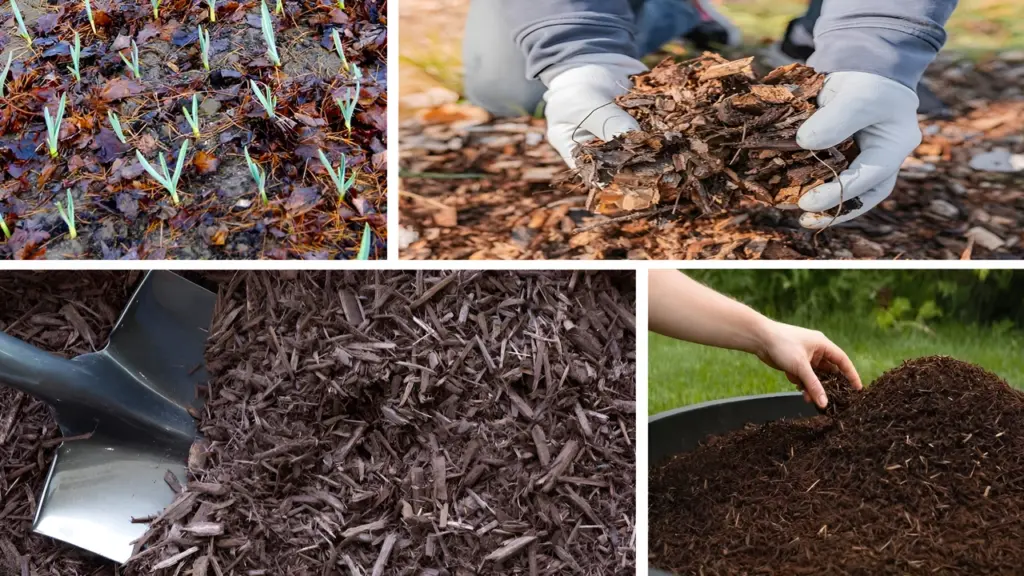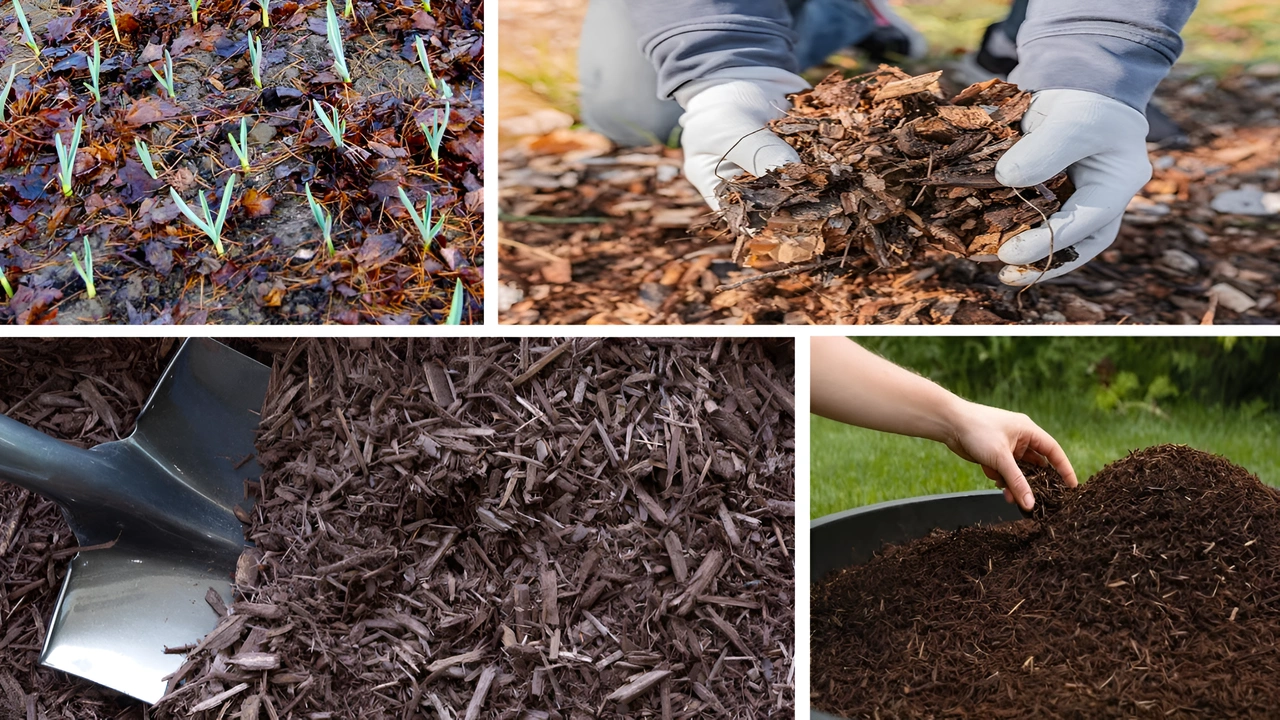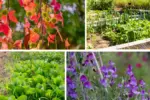Join on WhatsApp
Get the latest updates directly on WhatsApp – motivation, news & more!
As the days get shorter and the temperatures begin to cool, gardeners often think of wrapping up the growing season. But fall offers one last opportunity to give your garden the protection and nutrients it needs to thrive. The simple yet powerful act of mulching is one of the most effective ways to ensure your garden beds are ready for winter—and set up for success when spring arrives.
While spring mulching is often top-of-mind, applying mulch in the fall can help you combat winter’s challenges: frost, fluctuating soil temperatures, dormant weeds, and nutrient depletion. With the right approach, you can shield your plants from harsh elements, enrich the soil, and create an ideal environment for healthy growth come springtime.
In this article, we’ll walk you through everything you need to know about mulching in fall, from why it matters to the best materials and techniques for getting it right. By the end, you’ll be prepared to mulch like a pro and protect your garden beds through the colder months.

Why Mulching in Fall Matters
While mulching is a staple in garden care, fall offers a unique set of benefits that make it essential. Here’s why applying mulch during this time is more than just an aesthetic choice:
1. Insulates the Soil
Mulch serves as a natural blanket that moderates soil temperature. As the weather cools, this insulating layer prevents drastic freezing and thawing, which can harm plant roots. It keeps the soil temperature consistent, allowing plants to rest without suffering from the cold.
2. Retains Moisture
Even in the cooler months, plants need moisture. Mulch helps keep soil hydrated by reducing evaporation, ensuring that your plants have access to the water they need without constant watering.
3. Prevents Erosion
Autumn and winter bring rains and snow, which can erode topsoil. Mulch reduces this risk by helping to keep the soil in place and controlling runoff.
4. Suppresses Weeds
Many weeds take advantage of the fall to germinate and overwinter. A thick layer of mulch smothers weed seeds, keeping unwanted plants at bay until next season.
5. Adds Organic Matter
As organic mulch decomposes, it enriches the soil with valuable nutrients. This natural fertilizer will be ready to support your garden when the growing season returns.
6. Protects Perennials and Bulbs
Tender plants like perennials and bulbs are especially vulnerable to frost damage. Mulch provides an extra layer of protection, reducing the likelihood of cold damage to these delicate species.
Choosing the Best Mulch for Fall
The key to successful fall mulching is selecting the right materials. Depending on your garden’s needs and the aesthetic you prefer, here are some options to consider:
Organic Mulches
These are the best choices for enriching soil and improving long-term plant health:
- Shredded Leaves: A free and abundant resource in fall. Simply chop them up to avoid matting and spread them as a mulch layer. They add valuable organic material as they break down.
- Compost: This nutrient-rich mulch not only protects the soil but also feeds your plants. Use it as a base layer beneath other mulch.
- Bark Chips or Shredded Wood: These durable mulches last throughout the season and add a neat, polished look to your flower beds or paths.
- Straw: Light and insulating, straw is perfect for vegetable beds. It’s also easy to work with, but avoid hay as it often contains weed seeds.
- Pine Needles: If you have acid-loving plants like azaleas or blueberries, pine needles are ideal. They decompose slowly and are acidic, making them perfect for such species.
Inorganic Mulches
If you’re looking for something more permanent:
- Gravel or Stone: These materials provide excellent long-term coverage and are great for preventing erosion. However, they don’t add any nutrients to the soil.
- Landscape Fabric with Mulch Topping: This option helps suppress weeds in low-maintenance beds. Just ensure there’s enough airflow for the soil beneath.
For fall, shredded leaves, straw, and bark are your go-to options. They offer great insulation while naturally decomposing to nourish the soil.
The Best Time to Mulch in Fall
Timing is crucial when it comes to mulching. Apply it too early, and pests may be attracted to the area; too late, and you risk missing out on its protective benefits before winter fully sets in.
The ideal time for mulching is after the first frost but before the ground freezes completely. This timing varies depending on your location, but generally, late October to mid-November works best. This ensures that plants are dormant but the soil is still workable enough to receive mulch effectively.
Step-by-Step Guide: How to Mulch Garden Beds in Fall
Mulching is simple, but a few steps ensure you get the most out of your efforts. Here’s a quick guide to applying mulch in your garden beds:
1. Clean Your Garden Beds
Before mulching, clear away any weeds, dead plants, and fallen leaves. If you find any diseased foliage, discard it away from your compost pile to avoid spreading illness.
2. Water the Soil
Give your beds a good watering before applying mulch. Moist soil helps plants store energy for the winter and helps mulch settle in.
3. Add Compost or Fertilizer (Optional but Helpful)
If you want to give your garden an extra boost for the coming spring, spread a thin layer of compost or slow-release organic fertilizer before applying mulch.
4. Apply Mulch Evenly
Spread a layer of mulch 2–4 inches thick over the soil. Avoid piling it too high, as too much mulch can smother plant roots and prevent air circulation.
5. Keep Mulch Away From Plant Crowns
Leave about 2–3 inches of space around the base of plants, perennials, and trees. This prevents moisture buildup around plant crowns, which can lead to rot.
6. Tidy the Edges
Create neat edges around your mulched areas. This helps keep mulch from spilling onto paths and gives your garden a clean, well-kept look.
Special Considerations for Different Garden Types
Every garden type has its specific needs when it comes to mulching. Here’s how to adjust your approach:
- Vegetable Beds: Use straw or shredded leaves to keep root vegetables warm throughout the fall and winter. Garlic, in particular, benefits from a protective mulch layer.
- Flower Beds: Shredded bark or wood chips provide a polished, tidy look while also insulating perennials and flowers.
- Shrubs and Trees: Apply mulch around the drip line (the outer edges of the tree or shrub’s canopy), not just near the trunk. Wood chips are perfect for providing lasting coverage.
- Container Gardens: For potted plants, top them off with pine needles, straw, or shredded leaves to insulate roots from fluctuating temperatures.
Common Mulching Mistakes to Avoid
Even seasoned gardeners can make mistakes when mulching. To get the most out of your fall mulching, avoid these common pitfalls:
- Piling Mulch Too High: Over-application can suffocate plant roots and cause moisture buildup.
- Mulching Against Trunks or Plant Crowns: This can cause rot and attract pests.
- Using Fresh Grass Clippings: These can become compacted, create odors, and promote mold. Always compost them first.
- Skipping Weed Removal: Make sure to clear weeds before mulching. They can still grow under mulch and be harder to manage later.
- Using Hay Instead of Straw: Hay often contains weed seeds, which you don’t want in your garden.
Bonus Tips for Fall Mulching Success
- Shred Your Leaves: Avoid using whole leaves, as they tend to mat down and hinder water penetration. Shredding them allows them to break down more effectively.
- Mix Materials: Combine compost with shredded bark or leaves for both nutrient delivery and weed suppression.
- Refresh Existing Mulch: If you mulched in spring, simply top up the layer with a fresh inch or two instead of starting over from scratch.
- Mark Tender Plants: Place stakes or markers around delicate plants so you don’t accidentally damage them while mulching.
The Long-Term Benefits of Fall Mulching
Taking the time to mulch properly in fall pays off significantly in the long run. Not only will your soil be healthier, but your plants will be better protected, and weed growth will be significantly reduced. Plus, mulching saves you time and effort in the spring, as you’ll spend less time watering, weeding, and replenishing soil nutrients.
Think of mulching as tucking your garden into bed for the winter. It’s a simple task that ensures your garden will wake up vibrant and ready for the next growing season.
Conclusion
Fall mulching isn’t just about beautifying your garden—it’s a vital step in protecting your plants, conserving moisture, and enriching the soil for the upcoming year. With the right mulch, timing, and application, you can ensure your garden beds stay healthy, thriving, and ready for spring.
So, this fall, grab your rake and your favorite mulch material and give your garden the protection it deserves. It’s one of the easiest ways to set your garden up for success year after year.




